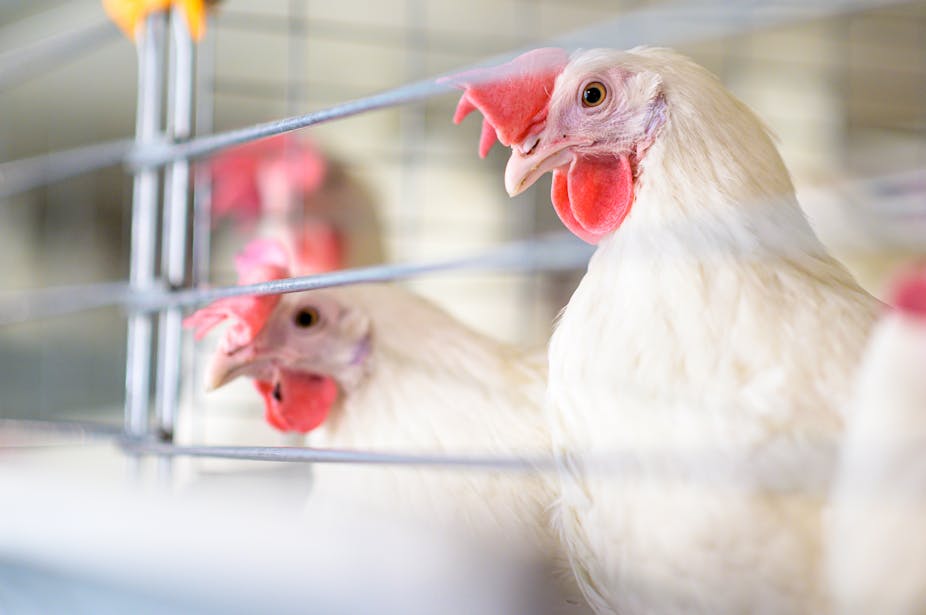The outbreak of avian influenza which has hit the UK since the autumn of 2021 is the largest the country has ever seen. And the picture is the same across Europe and the US, which are reporting a similar picture. To date, this outbreak has led to the death of nearly 100 million poultry birds around the world.
But the disease doesn’t only threaten poultry and egg production – it also threatens wild bird populations in a way that it never has before. While drastic action has been taken to control the spread of avian flu in domestic birds, these efforts may be insufficient alone to mitigate the impact on wild bird populations.
Typically, western Europe’s avian flu season starts in the autumn, when millions of migratory birds from colder climates – such as geese, ducks and swans – arrive for the winter. If these wild birds come into contact with domestic poultry, any pathogens they’re carrying can spread to these populations. It’s a time that poultry farmers and other bird keepers dread, as certain strains of bird flu (in particular highly pathogenic avian influenza, also known as HPAI) can be extremely deadly. Come springtime, when wild migratory birds return to their summer breeding grounds in eastern Europe and Asia, avian flu wanes with their departure.
Or, at least, that was the pattern in recent decades. But, since the autumn of 2020, this has changed.
Previous outbreaks of HPAI among UK poultry have been relatively rare. But between November 2020 to March 2021, 24 cases of HPAI were reported. This situation has only worsened since then, with more than 150 confirmed cases of HPAI between September 5 and November 17 of this year alone.
Similarly, between 2017 and 2019, only 40 UK wild birds tested after their death were found to be positive for HPAI. But this rose to 317 in 2020-2021 and 1,468 since October 1 this year.
Usually, HPAI causes mass mortality among poultry while the majority of wild birds seem less affected. This is one feature that makes the current avian flu outbreak so unique. To date, 15 species of seabirds have tested positive for HPAI for the first time, and die-offs in some species, such as great skuas, are worrying due to their magnitude and potential to threaten the species’ persistence in the UK.
Moreover, the seasonal downturn in cases of avian flu didn’t happen during the spring as confirmed outbreaks continued among poultry and wild birds over the summer.
Avian flu virus
Bird flu is caused primarily by an influenza A virus, which is closely related to other influenza viruses. These mutate rapidly and can combine genetic material from other influenza viruses into their genomes in order to produce new variants.
New strains of avian flu are typically imported during each bird migration season. But we are increasingly witnessing new strains emerging within the UK and other European countries over winter. The current H5N1 strain of HPAI, seems to be more infectious and more fatal to poultry, and more persistent in wild bird populations. It’s also able to affect a greater diversity of species than previous strains.
And, with a greater number of wild birds infected, this is likely to mean that there have been more opportunities for infected or contaminated wild birds to come into contact with poultry. This may also have contributed to the current high number of cases.

There are still many things that we don’t know about the current outbreak of avian flu, which is why the government has set up a task force to investigate. One factor this task force is looking into is whether the current strain can survive in the environment outside an animal host (a phenomenon known as environmental persistence). If this is possible, it may help explain why so many wild birds are being infected by the current strain of HPAI – and why outbreaks continued over the summer.
Containing the virus
The UK government has introduced a range of measures to contain avian flu. All British poultry farms are required to implement stringent biosecurity practices to help prevent their flocks from catching the virus, including housing free-range birds to prevent contact with wild birds, and regularly cleaning and disinfecting housing. Dead wild birds and poultry suspected of having avian flu are also being tested for the virus. If a single bird in a poultry flock is found with avian flu, the entire flock must be culled to prevent the disease from spreading.
Birds are not the only species that can become infected with avian flu. In the past, some strains have made the jump to mammals, including humans. There were 883 reported human cases of a H5N6 strain (which is not currently present in Europe) worldwide between 2017 and 2020. But this tended to manifest itself primarily among people working very closely with birds. There has only been one human case of H5N1 reported during the current UK outbreak, so risks to people are thought likely remain very low. The disease can also be effectively controlled with a course of antiviral medication if it does develop.
While measures to control avian flu help mitigate risks to poultry and people, they do little to help wild birds. This could be a problem both for the persistence of the current outbreak and the conservation of some threatened species, which are already under pressure due to human-induced changes to the environment.
The immediate future for HPAI looks rather bleak for the UK which can expect ongoing outbreaks among poultry and die-offs among wild birds continuing into next autumn and winter. The government’s task force will publish its findings next year, and will answer many questions about the current HPAI strain. But many more questions may need to be answered before we know how best to get the current outbreak under control.

